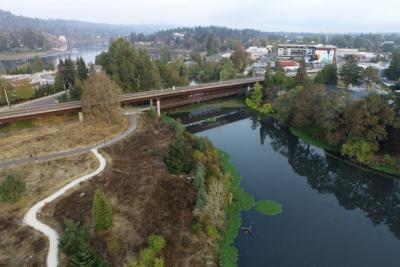- Neighborhoods
-
Community
-
- Overview History Vision Newsroom News Releases Pilot Newsletter Media Contact Projects Volunteer
- Engage Milwaukie Events City Calendar Recreation Biking in Milwaukie Parks and Trails Directory North Clackamas Parks and Recreation Reserve a Room Library
- Schools North Clackamas School District MHS Student of the Month Public Safety Police Clackamas Fire District #1 Code Compliance Emergency Preparedness Emergency Notifications Garbage & Recycling
-
- Business
- Departments
-
Useful Links
-
- Jobs Alerts & Notifications Email Subscriptions Emergency Notifications Meetings City Services A-Z Mapping & GIS
- Contact the City Staff Directory Request a Public Record Report a Code Violation Report a Pothole Report Misconduct Schedule an Inspection Documents & Forms Documents and Reports Forms, Permits, and Applications
- Helpful Links Digital Archives Library Catalog Municipal Code Purchase a Parking Permit Paperless Billing Pay a Ticket or Utility Bill Urban Forest
-
Project Benefits
The benefits of the project include restoring threatened fish species access to critical refugia and off-channel habitat to reducing flooding, improving the resiliency of state highway transportation infrastructure, and improving underserved community safety, access to natural areas, educational opportunities, and workforce development.
Kellogg Dam was constructed in 1858 and has served no purpose since the 1890s. Removing the dam requires replacing the 89-year-old Kellogg Creek Bridge on Highway 99E, as the dam forms part of the bridge foundation. Bridge improvements will improve multi-modal transportation access, increase infrastructure resiliency, public safety, and connectivity between downtown Milwaukie and the Milwaukie Bay Park waterfront on the Lower Willamette River.
Removing the Kellogg Dam barrier will provide volitional access to 15 miles of riverine habitat in a 10,680-acre watershed and restore 14 acres of lower Willamette River floodplain habitat. Additional benefits include improving water quality, removing contaminated sediment by restoring the natural stream and floodplain through Kellogg Lake, increasing pedestrian safety and public access to greenspace, will create jobs and quality of life (health, recreation, economic, educational) benefits to surrounding communities and City of Milwaukie students.


